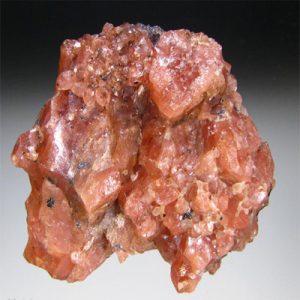Bustamite
Bustamite is similar in properties and appearance to Friedelite and Rhodonite. It is found at several localities around the world but faceted gems are very rare and usually small. Cat’s eye material is available but also rare. Bustamite is usually seen as beautiful reddish to pinkish cabochons. Its color is from the presence of manganese. Its cleavage makes faceted gems difficult to cut.
Sources of Bustamite are the “type material”, from Tetela de Ocampo, Hidalgo, Mexico, is a mixture; well-studied material from other localities includes: in the USA, at Franklin, Sussex County, New Jersey. At Långban and in the Harstigen mine, near Persberg, Värmland, Sweden. At the Treburland mine, Altarnun, Cornwall, and in the Railroad quarry, Meldon, near Okehampton, Devon, England. At Camas Malag, Isle of Skye, Scotland. From Baita (Rézbánya), Romania. At Campiglia, Tuscany, and Schio, Vicenza, Italy. From the N’Chwaning mine, near Kuruman, Cape Province, South Africa. In Australia, at Broken Hill, New South Wales. From the Obori mine, Yamagata Prefecture; the Noda-Tamagawa mine, Iwate Prefecture; the Kanoiri mine, Tochigi Prefecture; the Mikumo mine, Shiga Prefecture; and the Hijikuzu mine, Iwate Prefecture, Japan

| Chemical Formula: | (Mn, Ca)3Si3O9 |
| Manganese Calcium Silicate | |
| Molecular Weight: | 381.92 gm |
| Composition: | Calcium | 7.87 % | Ca | 11.01 % | CaO |
| Manganese | 32.37 % | Mn | 41.79 % | MnO | |
| Silicon | 22.06 % | Si | 47.20 % | SiO2 | |
| Oxygen | 37.70 % | O | |||
| 100.00 % | 100.00 % | = TOTAL OXIDE |

